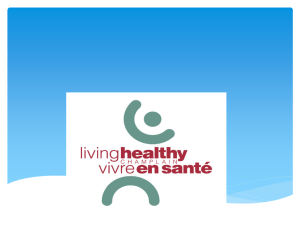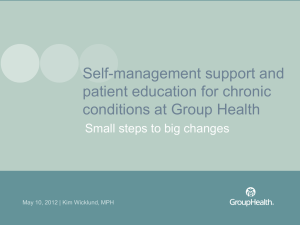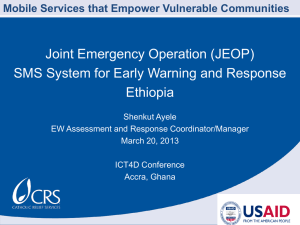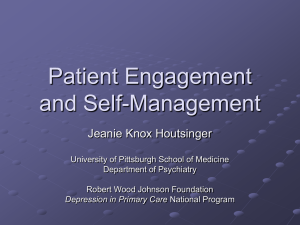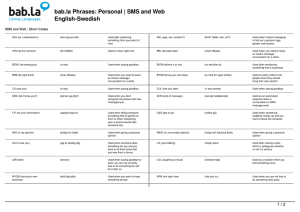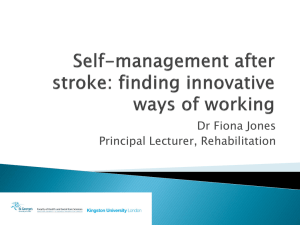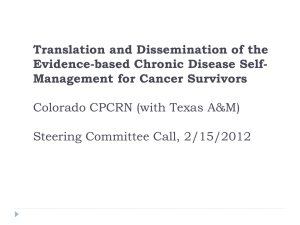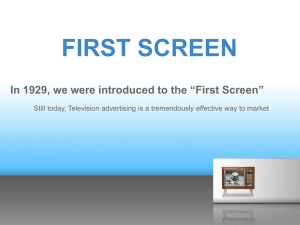Self-Management Support @ GF Strong
advertisement
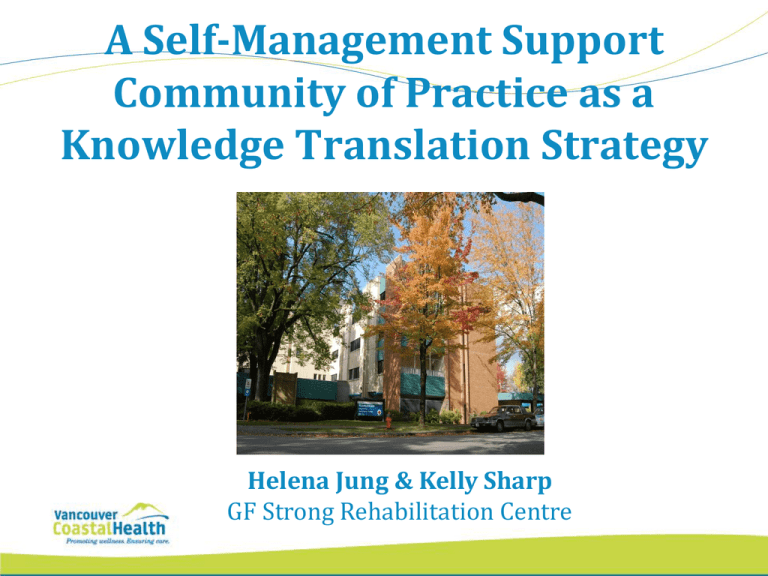
A Self-Management Support Community of Practice as a Knowledge Translation Strategy Helena Jung & Kelly Sharp GF Strong Rehabilitation Centre Disclosures We are unable to identify any potential conflict of interest and have nothing to disclose… Learning Objective To learn how a community of practice facilitates clinicians’ knowledge, skills, and confidence in the use of selfmanagement support strategies in an acute rehabilitation setting. Outline • Background • Our Story • Needs Assessment • Community of Practice • Quality Improvement Project • Lessons Learned Chronic condition: “any ongoing management over a period of years or decades” (WHO, 2005) At GF Strong… Definitions Self-Management (SM): “Tasks that an individuals must undertake to live well with one or more chronic conditions.” Self-Management Support (SMS): “Systematic provision of education and supportive interventions, by health care staff (and others), to increase patients’ skills and confidence in managing their health problems” Health Council of Canada (2012) Self-Management Support @ GF Strong Needs Assessment Community of Practice Quality Improvement Project Next Steps of SMS @ GF Strong Self-Management Support @ GF Strong Needs Assessment Community of Practice Quality Improvement Project Next Steps of SMS @ GF Strong Community Of Practice “a group of people who share a concern, set of problems, or a passion about a topic, and who deepen their knowledge and expertise in this area by interacting on an ongoing basis.” (Wenger et al., 2002) 9 SMS Community Of Practice Survey Quantitative Qualitative •20 questions, based on 5 point confidence rating scale • Related to clinicians’ ability to facilitate SMS using SMS tools Based on 4 open-ended questions: 1. What did you learn from the experience of being involved with the SMS Community of Practice? 2. What are your ongoing learning needs? 3. What tools/components of SMS did you find useful and plan to incorporate in your practice? 4. What ideas do you have in bringing SMS to your team, program, and GF Strong as a whole centre? average scores: 5 4 3 2 1 0 Pre N=8 Post N=10 Self-Management Support @ GF Strong Needs Assessment Community of Practice Quality Improvement Project Next Steps of SMS @ GF Strong Self-Management Support @ GF Strong Needs Assessment Community of Practice Quality Improvement Project Next Steps of SMS @ GF Strong So far…. Our Lessons Learned General: • Staff engagement • Need for Evaluation • Management support • Plan for attrition • Patient perspective Community of Practice: • Coordinator(s) to facilitate • Input from content experts • Ongoing sharing Key Message “Coming together is a beginning; keeping together is progress; staying together is success.” Henry Ford Acknowledgements Karen Anzai Caroline Marcoux GFS SMS Community of Practice members Susan Barlow Dr. Brad Hallam Chris Palmer Patrick McGowan Maylene Fong Helena Jung, BSc OT, MRSC GF Strong Educator GF Strong Rehabilitation Centre helena.jung@vch.ca Kelly Sharp, BSc OT, MRSC (candidate) Community Intervention Coordinator GF Strong Rehab Center kelly.sharp@vch.ca References 1. 2. 3. 4. 5. Bandura, A. (1977). Self-efficacy: Toward a Unifying Theory of Behavioral Change. Psychological Review, 84(2), 191-215. Health Council of Canada. Self-management support for Canadians with chronic health conditions: A focus for primary health care [Internet]. Health Council of Canada; May 2012 Available from: http://www.carp.ca/2012/05/24/self-management-support-for-canadians-with-chronic-healthconditions-hcc-report/ Heidi S, Renninger KA. The Four-Phase Model of Interest Development. Educ Psychol. 2014; 41(2): 111-127. Wenger E, McDermott R, Snyder WM: Cultivating Communities of Practice: A Guide to Managing Knowledge. Boston, MA: Harvard Business School Press; 2002. World Health Organization. Preparing a health care workforce for the 21st century: The Challenge of Chronic Conditions. Switzerland: World Health Organization; 2005 [cited 2014 Mar 1]. Available from: http://apps.who.int/iris/handle/10665/43044 Expanded Chronic Care Model: Integrating population health promotion Barr, 2003 5 A’s Delivery Model ARRANGE • Follow-up • Link-up (Glasgow et al., 2002; Whitlock et al., 2002). ASSESS • Building rapport through open-ended questions • Agenda bubbles* • Readiness Change Scales • Decisional Balance • COPM • Wellness checklist* ASSIST • Problem solving • Reviewing action plan • Reviewing wellness checklist ADVISE • Information from assesment • Ask-Tell-Ask • Closing the loop AGREE • Agenda bubbles* • Action plan • Wellness checklist* Resources • • • • • Knowledge Translation Canada: http://ktclearinghouse.ca/ktcanada CCMI: The Centre for Collaboration, Motivation and Innovation http://www.centrecmi.ca/ Self- management BC: http://www.selfmanagementbc.ca/ BC Ministry of Health - Self-Management Support: A Health Care Intervention: http://www.selfmanagementbc.ca/uploads/What%20is%20SelfManagement/PDF/SelfManagement%20Support%20A%20health%20care%20intervention%202011.pdf Registered Nurses’ Association of Ontario – Strategies to Support Self-Management in Chronic Conditions: Collaborating with Clients: http://rnao.ca/bpg/guidelines/strategies-support-selfmanagement-chronicconditions-collaboration-clients 20
